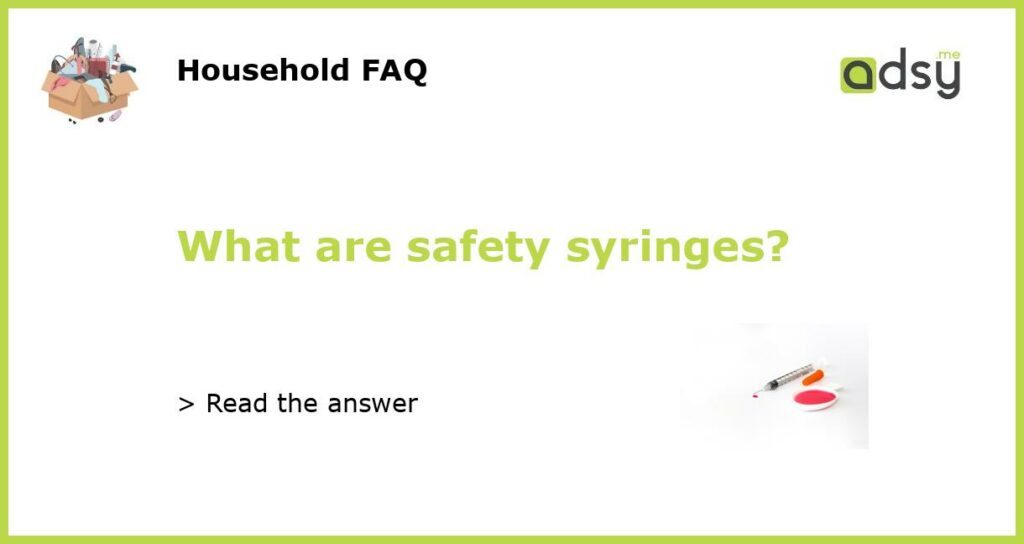Safety Syringes: Enhancing Patient and Healthcare Worker Safety
Safety syringes play a crucial role in enhancing patient and healthcare worker safety by reducing the risk of needlestick injuries and exposure to bloodborne pathogens. These innovative medical devices are designed with built-in safety mechanisms that prevent accidental needlestick injuries and promote safe and proper disposal. From hospitals and clinics to home healthcare settings, safety syringes are becoming increasingly popular due to their numerous benefits and the need for improved healthcare safety.
The Need for Safety Syringes
The use of traditional syringes, which lack safety features, puts both patients and healthcare workers at risk of accidental needlestick injuries. Needlestick injuries can lead to the transmission of bloodborne pathogens such as HIV, hepatitis B, and hepatitis C, among others. According to the World Health Organization (WHO), an estimated 1.2 million healthcare workers experience needlestick injuries each year, highlighting the urgent need for safer medical devices such as safety syringes.
Features and Benefits of Safety Syringes
Safety syringes are equipped with various safety mechanisms that are designed to prevent needlestick injuries and promote safe disposal. One common safety feature is the retractable needle, which automatically retracts into the syringe barrel after use, eliminating the risk of accidental pricks. Another feature is the sliding sheath or shield that covers the needle once the injection is complete, further reducing the risk of needlestick injuries during needle removal and disposal.
Additionally, some safety syringes have a permanent lock feature that prevents the needle from being reused or recapped, thus minimizing the risk of needlestick injuries when handling and disposing of used syringes. Other types of safety syringes feature a safety cap that covers the needle and provides an extra layer of protection against accidental needlestick injuries.
The benefits of safety syringes extend beyond preventing needlestick injuries. They also promote efficient and hygienic waste management by reducing the risk of needlestick injuries during disposal. Safety syringes contribute to the overall improvement in healthcare safety and patient care, as they minimize the potential for transmission of infectious diseases.
Applications of Safety Syringes
Safety syringes are used in a wide range of medical settings, including hospitals, clinics, doctor’s offices, and home healthcare settings. They are commonly used for administering vaccines, drawing blood, and delivering medications, among other medical procedures. Safety syringes are particularly crucial in high-risk environments such as emergency rooms, where healthcare workers are exposed to a greater likelihood of accidental needlestick injuries.
Regulations and Adoption of Safety Syringes
Various regulatory bodies and healthcare organizations have recognized the importance of safety syringes in reducing needlestick injuries. For instance, the U.S. Occupational Safety and Health Administration (OSHA) mandates the use of safety syringes in healthcare settings to protect workers from needlestick injuries. The European Union has also implemented regulations requiring the use of safety-engineered medical devices, including safety syringes, to minimize the risk of needlestick injuries.
As awareness about the importance of safety syringes grows, there has been a significant increase in their adoption worldwide. Healthcare facilities are increasingly implementing safety syringe programs to protect their patients and healthcare workers. Manufacturers are also focusing on developing new and innovative safety syringes that meet the specific needs of healthcare providers, thereby driving the growth of the safety syringe market.






